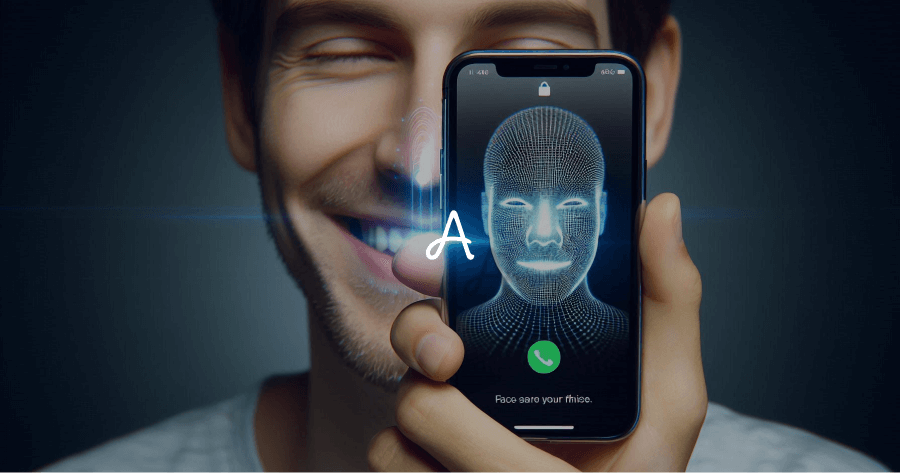What is Face ID on Your iPhone or iPad?
Face ID is a sophisticated facial recognition technology designed by Apple to unlock your iPhone or iPad Pro securely and conveniently. Introduced with the iPhone X, it has since become a standard feature in many Apple devices, including the iPhone 11, iPhone 12, iPhone 13, and the iPad Pro. To set up Face ID, users need to position their face within the frame, allowing the TrueDepth camera to capture a detailed infrared image and create a precise map of their face data. This map is then used to authenticate the user and unlock the device.
Face ID works by projecting over 30,000 invisible dots onto the user’s face, creating a depth map that the device analyzes. This technology is designed to work in various lighting conditions and can adapt to changes in appearance, such as wearing a mask or sunglasses. With iOS 15.4, Apple introduced the ability to use Face ID with a mask, enhancing its functionality during the pandemic. If Face ID can’t recognize the user, they can still enter your passcode to unlock your phone.
Beyond unlocking the device, Face ID is also used for authentication in various applications. Users can use Face ID to sign into apps, authorize Apple Pay transactions and access secure data. It offers a higher security level than Touch ID and traditional passwords. The attention for Face ID feature ensures that the user is actively looking at the device, adding an extra layer of security. If you want to use Face ID, you can enable it through the settings on your Apple device.
For those who require assistance, Apple Support provides comprehensive guides on how to set up Face ID and troubleshoot any issues. Whether you are using an iPhone or iPad Pro, Face ID is designed to work seamlessly, providing a secure and efficient
Importance of Face ID Technology
Face ID technology has revolutionized the way users interact with their iPhone and iPad Pro, providing a seamless and secure method of authentication. Apple Face ID utilizes a sophisticated map of your face to ensure that only the rightful owner can access the device. Here’s how it works: you simply glance at your iPhone and the technology will position your face to unlock the device. This feature is particularly useful for payments with Apple Pay, as it adds an extra layer of security. Face ID is used not only for unlocking but also for accessing apps from the App Store and authenticating Apple ID transactions.
Face ID uses advanced algorithms to create and update a detailed map of your face, ensuring accuracy and security. Face ID’s ability to adapt to changes, such as wearing a face mask or growing a beard, makes it highly reliable. For those using an iPhone 12 or later, Face ID also works with an Apple Watch to unlock the device when wearing a face mask. Apple claimed that Face ID works best when users require attention for Face ID, meaning they must look directly at the device. Users can enable or disable Face ID based on their preferences, ensuring flexibility and control.
For those with an iPhone XS or newer models, Face ID is even more efficient and secure than traditional methods like fingerprint recognition. The technology continuously updates your face data to adapt to any changes in your appearance, ensuring consistent performance. Moreover, users can also use Face ID for iPhone unlock or iPad unlock, making it a versatile feature across multiple devices. The introduction of Face ID in the new iPhone models has set a new standard for biometric authentication, combining convenience with top-notch security.
More About Facial Recognition Technologies
Apple Inc. introduced Face ID with the release of the iPhone X in 2017, revolutionizing face recognition technology. Face ID can be used to unlock your device, authenticate purchases, and more. According to Apple, Face ID is designed to work with hats, glasses, and even facial hair. However, if Face ID fails, you can still verify your identity by using your passcode before it updates. To enhance security, you may need to set up a passcode as a backup.
For those who prefer traditional methods, Touch ID fingerprint scanning is still available on some devices. If you wish to disable the required attention for the Face ID feature, you can do so in the settings. In cases where you need to reset your Face ID, you can easily reconfigure it. Devices with Face ID allow you to use this technology seamlessly, but if it fails, you can always rely on your passcode.
Moreover, Face ID is designed to make the user experience more secure and convenient. Unlike traditional passwords, which require you to enter a master password every time, Face ID detects and scans your face instantly. This technology ensures that your device remains secure while providing quick access. In summary, Apple’s Face ID is a robust and secure method for facial recognition, offering a blend of convenience and advanced security features.





